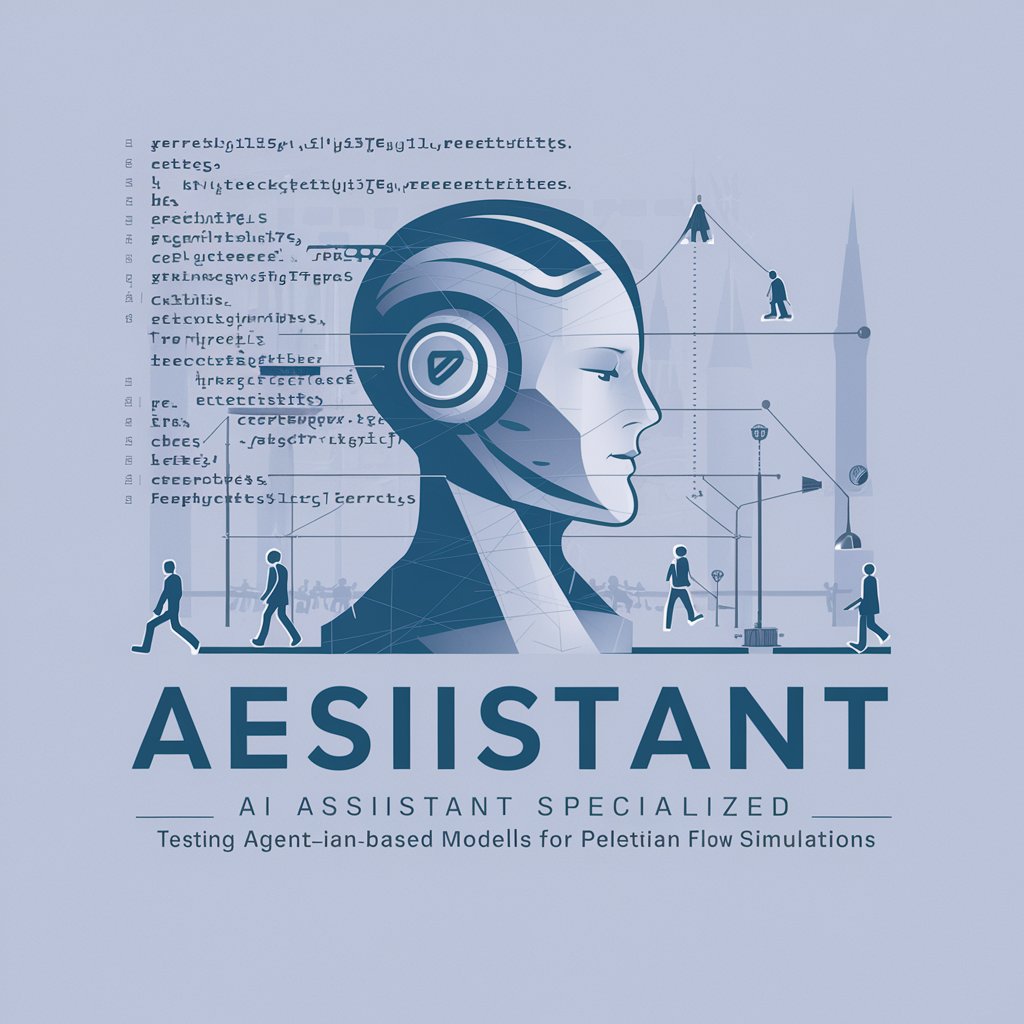Ped-network-model coder - Python Model Testing Tool

Hello! Let's ensure your code is robust and well-tested.
Elevating AI in pedestrian simulation testing.
Write a test case for the pedestrian flow model that checks...
Guide me on how to use Mypy for type-checking in our project, especially for...
How can I optimize the testing process for an agent-based model by...
Suggest best practices for writing Pytest tests for a Mesa-based simulation involving...
Get Embed Code
Introduction to Ped-network-model Coder
Ped-network-model coder is a specialized tool focused on developing and testing agent-based models (ABMs) for pedestrian flow simulations within complex environments such as train stations, shopping malls, or stadiums. Its primary objective is to streamline the process of creating, managing, and validating agent-based models by incorporating rigorous typing standards, facilitating robust testing frameworks, and optimizing performance. By leveraging tools like Mesa, Poetry, Pytest, and Mypy, Ped-network-model coder provides a comprehensive solution that enhances the development experience while ensuring model accuracy. An example scenario includes validating the impact of station layout on pedestrian congestion, which requires realistic agent behavior simulations and precise data collection. Powered by ChatGPT-4o。

Main Functions of Ped-network-model Coder
Agent-Based Model Development
Example
Creating custom pedestrian agents that simulate realistic movement patterns in a train station.
Scenario
A transportation authority seeks to redesign station layouts to minimize congestion. Ped-network-model coder helps developers define pedestrian agents and their interactions with the station environment to simulate the flow and identify potential design flaws.
Automated Testing
Example
Using Pytest for test automation to verify the accuracy of agent behavior and environment interaction.
Scenario
Developers are testing new agent attributes, such as varying speed based on age groups, in an environment like a stadium. Automated testing ensures these modifications result in realistic, predictable pedestrian movement patterns.
Static Type Checking
Example
Employing Mypy to ensure strict type checking during development.
Scenario
A modeler wants to refine pedestrian agent classes to incorporate additional health and physical fitness attributes. Using Mypy helps guarantee strong typing across new and existing attributes to reduce runtime errors and simplify debugging.
Dependency Management
Example
Integrating Poetry to manage Python dependencies.
Scenario
A team of developers collaborates on a large-scale pedestrian flow project that requires consistent dependency management across multiple environments. Poetry ensures seamless installation and updates of required libraries for the project.
Ideal Users of Ped-network-model Coder
Transportation Planners
Transportation planners can use Ped-network-model coder to simulate pedestrian movement within train stations or bus terminals. This allows them to assess crowd management strategies and optimize layout designs for better pedestrian flow.
Event Organizers
Event organizers, such as those managing sports stadiums or convention centers, benefit by testing crowd movement under varying scenarios to enhance safety and improve the overall attendee experience.
Public Safety Researchers
Public safety researchers focused on disaster response can use Ped-network-model coder to simulate emergency evacuation scenarios and evaluate the effectiveness of different safety protocols.
Urban Designers
Urban designers planning public spaces like shopping malls or parks can use the tool to analyze how design changes impact pedestrian circulation, ensuring a better flow and accessibility.

How to Use Ped-network-model Coder
Start Free Trial
Visit yeschat.ai to begin using Ped-network-model coder with no need for login or ChatGPT Plus.
Install Required Libraries
Ensure Python is installed on your machine along with the Mesa, Poetry, Pytest, and Mypy libraries for testing and type checking.
Familiarize with Features
Review documentation or introductory tutorials available on the yeschat.ai resources page to understand the capabilities and features of the Ped-network-model coder.
Create Your Model
Set up your pedestrian flow model using Mesa in your Python environment. Define agents and environments as per the needs of your project.
Write and Run Tests
Write tests using Pytest to ensure your model works as expected. Use Mypy for type-checking to maintain code quality.
Try other advanced and practical GPTs
network engineer
AI-Driven Network Optimization

Assistente de redação jurídica
Powering Legal Drafting with AI

Französisch-Deutsch Übersetzer
AI-Powered German-French Translation Tool

COVINGTON LAW
Empowering Legal Documentation

Cloud Engineer Pro
Empowering cloud innovation with AI

Український Юрист
AI-powered Expertise in Ukrainian Law

ManyChat Pro
Empowering Conversations with AI

C Language Tutor
Learn C, powered by AI

Stencils
Craft Your Imagination with AI

BigCommerce Dev Advisor
Enhance your BigCommerce experience with AI-powered development support.

装修智友
Transforming Spaces with AI

Mendix Minstrel
Empower Your Code with AI

Frequently Asked Questions about Ped-network-model Coder
What is Ped-network-model coder?
Ped-network-model coder is a specialized AI tool designed to help developers write, test, and optimize agent-based models for simulating pedestrian flow in environments such as stations.
How can Ped-network-model coder improve the quality of my models?
The tool provides frameworks like Pytest for testing and Mypy for type checking, ensuring your code is robust, error-free, and adheres to best practices in software development.
Is prior knowledge of Python necessary to use Ped-network-model coder?
Yes, a fundamental understanding of Python and experience with libraries like Mesa is essential to effectively use Ped-network-model coder to its fullest potential.
Can I integrate Ped-network-model coder with other software?
Yes, Ped-network-model coder can be integrated with other Python-based tools and libraries, enhancing its functionality and adaptability in various computational environments.
What support is available for users of Ped-network-model coder?
Users can access a range of support options including detailed documentation, user communities, and tutorial videos available through the yeschat.ai platform.
